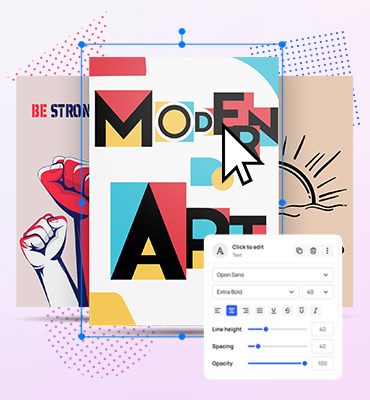The Best Guide To Successful Parental Control Design

This blog post will dive into the behavior change principles, focusing on parental control design.
We all know the importance of behavioral change to live a sustainable and happy life. One way to achieve behavioral change is through design.
Moreover, behavior change is an essential process for both society and its individuals. Behavior change helps to improve one’s physical, mental, and social health. It also helps to modify one’s internal thinking and self-esteem.
Let’s now learn more about these two concepts.
The psychology of habit formation
Do you wake up in the morning and immediately reach out for your phone? Well, this phenomenon is known as habit formation.
In simple terms, habit formation is when behavior becomes automatic through repeated practice. Habits occur unconsciously. For example- brushing your teeth before bed.
Habit formation involves three stages:
- Cue: A cue is like a trigger that prompts a desired behavior. It can be an emotional state, a place, or a time of the day.
- Routine: A routine is an action that can be physical or mental—for example- reaching out for a cigarette right after your meal.
- Reward: A reward is when your routine has a positive outcome reinforcing that behavior. Rewards can be tangible, like gifts, or intangible, like public praise.
Example of habit formation:
- If someone wants to start working out daily, they will choose a time of the day and a location as their cue.
- Then, they will select a workout drill as their routine.
- Finally, they will reward themselves with a variable reward or reinforcement, such as food or an energy drink.
Parental control design and the psychology of parental behavior
Parental control is the technology that monitors children’s online activities. It allows parents to monitor a targeted mobile phone’s activity effectively, including the usage of online educational games for children.
The psychology of parental behavior involves practices and patterns of actions intended to guide relationships and interactions between a parent and child.
Critical factors in the psychology of parental behavioral change are crucial in developing parental control design. Some of the factors are:
1. Communication:
It refers to the safe and effective communication between a parent and a child regarding using parental control designs.
2. Trust:
Trust is a fundamental basis in a parent-child relationship. Therefore, parents should use control designs to protect their kids from cyberbullying, threats, harassment, and inappropriate content.
However, it’s not okay for parents to use parental controls because of trust issues.
3. Flexibility:
As our world is dynamic and changing, so are parent-child relationships. Thus, parental control designs should update themselves in terms of the changing parental methods and relationships.
4. Liberty:
Parents should provide certain freedom to their children according to their age. Also, independence in one’s life will teach kids about the safe practice of online gadgets.
Hence, parental control design and the psychology of parental behavior go hand in hand. Therefore, the designer and the marketing team need to understand the concept of parental psychology before creating parental control products. This way, parental controls can provide parents with an easy, safe, and fun user experience.
Designers can create practical and user-friendly parental control products by considering the following factors:
1. Simplicity:
Keep the design simple and easy to understand. For example, make the parental control settings accessible and not buried deep within the product.
2. Flexibility:
Provide flexibility in the parental control settings to accommodate different parenting styles and family needs. For instance, allow parents to set different rules for devices like laptops, smartphones, and tablets.
3. Customization:
Allow parents to customize the parental control settings to fit their specific needs. For instance, allow parents to set time limits for particular apps or websites.
4. Feedback:
You can implement a way to provide feedback to parents on their children’s device usage, such as how much time they spend on certain apps or websites.
5. Education:
Educate parents on the importance of setting up parental controls and how to use them effectively.
By incorporating these design principles, designers can create parental control products that are effective, easy to use, and cater to the diverse needs of families.
Behavior change principles
Behavior change principles and design are intertwined. With specific behavioral techniques and strategies like the hooked model, businesses and markets can create products or services favorable to people’s behaviors and habits.

In this section, we’ll learn how design is linked with behavior change principles behavioral designers recommend.
1. Trust, credibility, and transparency
Firstly, behavioral economics believes in having and gaining trust. In any institution, there must be trust and credibility between its members. A workspace should be designed where members take full responsibility for their actions.
Furthermore, any institution or product design should have transparency, meaning nothing should be hidden from its members and customers.
2. Motivation
Motivation is a crucial behavioral change principle. Without motivation, behavior cannot be changed. Therefore, individuals should have a dedicated goal to motivate them to work hard in achieving their objectives.
Motivation also relates to businesses. Thus, a business’s goals and environment should be designed to promote healthy inspiration among employees to create a better working environment. To further this goal, recognizing employee efforts is crucial; initiatives such as unique awards or other memorable gifts can play a significant role in achieving this.
Cultivating a good working environment is important. For example, creating unique coffee table photo books that capture team milestones and happy moments can be a beautiful way to preserve team memories, fostering a sense of belonging and collective achievement that goes a long way in motivating employees.
3. Individualization
Any product or app must allow consumers and users to showcase their unique talents and characteristics.
Individualization also means designing for behavioral change by sorting out content, features, and items according to age, gender, place, and skills. For example- the Instagram app doesn’t allow teenagers under 18 to view explicit content. This app design respects the innocence of individuals in that particular category.
4. Education
Without education and knowledge, we are nothing. Therefore, people should keep seeking knowledge to educate themselves better, which leads to favorable social behavior modification.
Similarly, businesses and organizations should conduct valuable research to improve and enhance their products and services.
5. Goal setting and revising
One of the crucial principles of behavior change is to set achievable goals. When setting goals, one should break their main goals into smaller ones. Then, they should review whether their goals are being met daily.
Goal setting provides a clear view of the primary purpose of your work, business, or institution. Working towards a goal will also help to achieve more in less time.
6. Feedback
Behavior change requires straight and proper feedback from other people. So often, we fail to recognize our negative habits, which people around us notice. Thus, honest feedback from them will help us navigate ourselves in the right direction.
For example- many parental control apps allow users to send feedback to them. Feedback will help them improve their product designs to be suitable for their audience.
7. Reminders
Reminders are an essential part of design and behavior change. Correspondingly, they allow individuals to stay on track with their goals and focus on crucial details.
It helps design products more efficiently by reminding designers about their primary objectives.
8. Aesthetic experience
Aesthetic experience is linked with mind, body, and emotion. In simple terms, aesthetic experience is perceiving and understanding relationships between the natural and social worlds.
Hence, it allows individuals to integrate their body, mind, and emotion and align them with their goals. This design helps modify people’s lives.
9. Relevancy
Relevancy is the phenomenon of being closely connected to one’s goals and objectives. Therefore, the person’s habit and pattern design must be relevant to their behavior change plans.
Moreover, an app model should meet their design requirements to their primary business objective. For example, if an app is targeted at students, then the app must require designs that are attractive and attention-grabbing.
10. Transcendence and empowerment
These are two critical principles of behavioral change that are associated with the concept of personal growth and self-actualization.
Transcendence allows an individual to move beyond their physical, mental, and emotional limitations by developing a deeper connection to some meaning in life.
On the contrary, empowerment is taking complete control of one’s life situations and circumstances. Empowerment allows individuals to develop self-confidence and self-esteem.
Both transcendence and empowerment are factors that enhance growth to help one become the best version of oneself.
Challenges and ethical considerations
1. Potential downsides of behavior change design interventions
Behavior change can have potential disadvantages and drawbacks to individuals and society, as well as consequences in a person’s life. For example- behavior change can cause an individual to grow obsessive-compulsive disorder in organizing things.
Similarly, social behavior change interventions depend on technology, which can cause individuals to rely highly on digital apps. This can make the individual less self-sufficient and more dependent on the Internet.
2. Ethical considerations for designing behavior change
Behavior change designs require individuals to follow specific ethical guidelines to use behavior change techniques properly.
A few of the ethical considerations:
- Informed consent: The first change in behavior design is to provide full consent to the design strategy. Next, the individual must be informed about the behavior design’s process, tools, benefits, drawbacks, methods, and purpose.
- Privacy: Behavior change designs should respect each individual’s privacy and maintain confidentiality. Personal data given by the individual should be secured and protected.
- Right to autonomy: Individuals should be allowed to decide their actions and goals. Thus, they should also be able to withdraw from the behavior change intervention if they feel uncomfortable.
3. Guidelines for responsible behavior change
The following guidelines can provide a successful behavior change:
- Follow evidence-based techniques: Individuals should research and select a behavior design strategy with positive feedback and good results.
- Goal maintenance: After setting goals to follow a behavior change design, the individual should complete each step and achieve the final goal.
- Evaluate your progress: During the process of behavior change by design, you must keep track of your progress by evaluating the effectiveness of your hard work. In addition, you can be aware of your strengths and weaknesses through design research.
Conclusion
Imagine a student who walks into a dull classroom every day. Then, imagine the school designing to change the classroom with bright colors, encouraging quotes, and comfortable seating.
What difference will be there in that student’s academic performance? First, the students will significantly improve their studies because the classroom design will influence their behavior.
The above-given example is the gist of this article. It means that design can highly influence a person’s mindset, attention, and capabilities. Thus, design can lead to significant human behavior change.
Make sure to use a mockup generator to preview your designs.
Related articles
-
 Design Tips
UX vs UI: Key Differences Every Designer Should Know About
Design Tips
UX vs UI: Key Differences Every Designer Should Know About
-
 Marketing Tips
4 Useful Tactics That Will Boost Your Website’s Conversion Rates
Marketing Tips
4 Useful Tactics That Will Boost Your Website’s Conversion Rates
-
 Marketing Tips
How to Use Visual Storytelling to Better Reach Your Audience
Marketing Tips
How to Use Visual Storytelling to Better Reach Your Audience
-
 Blog
Tips to Achieve Affiliate Marketing Success | Affiliate Marketing 101
Blog
Tips to Achieve Affiliate Marketing Success | Affiliate Marketing 101
Visualize your design Use a product mockup to showcase your design

Create your design Use our templates to create delightful designs for any medium




